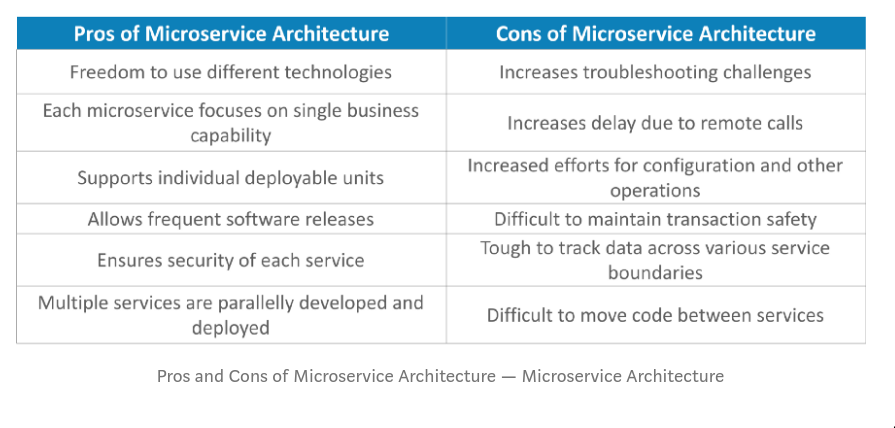Monolith vs microservice architecture
Contents and images taken from the book: https://www.amazon.com/Microservices-Patterns-examples-Chris-Richardson/dp/1617294543
Monolithic architecture
Benefits
- Simple to develop: IDEs and other developer tools are focoused on building a single applicatoin
- Easy to make radical changes to the applicatoin: You can change the code and the database schema, build, and deploy
- Straightforward to test: The developers wrote end-to-end tests that launched the application, invoked REST API
- Straightforward to deploy
- Easy to scale: Ran multiple instances of the application behind a load balancer
Drawbacks
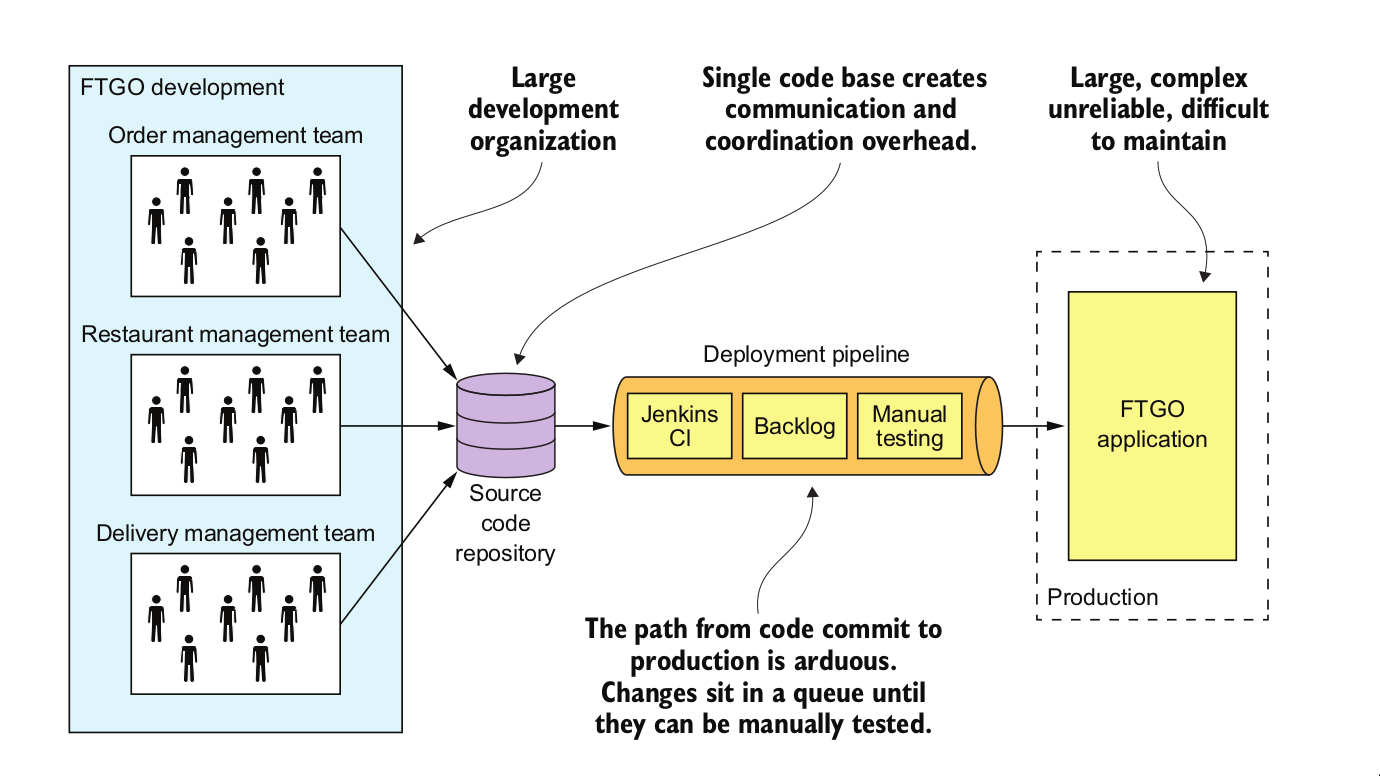
- Development is slow: the large applicatoin overloads and slow down a developer's IDE. The application takes a long time to start up
- Path from commit to deployment is long: Adopting continuous deployment seems impossible
- Locked into obsolete techonology stack
Microservices
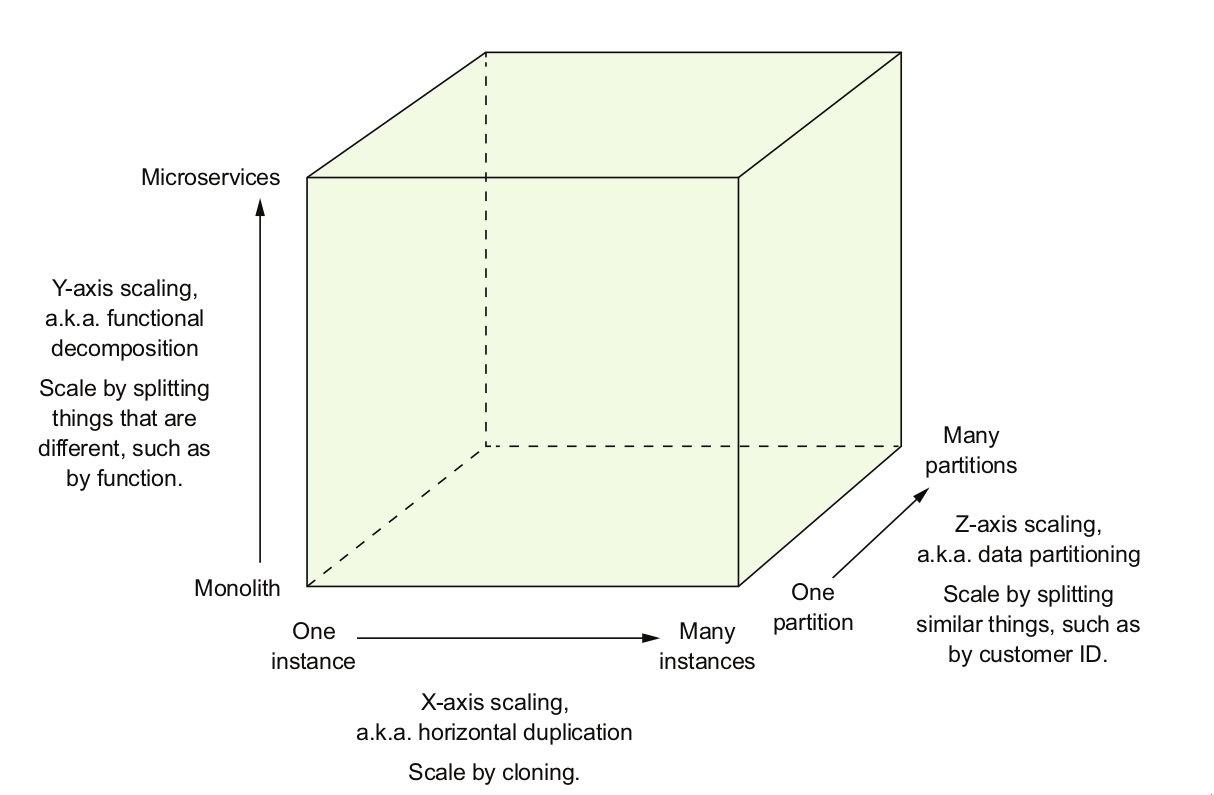
X-axis scale
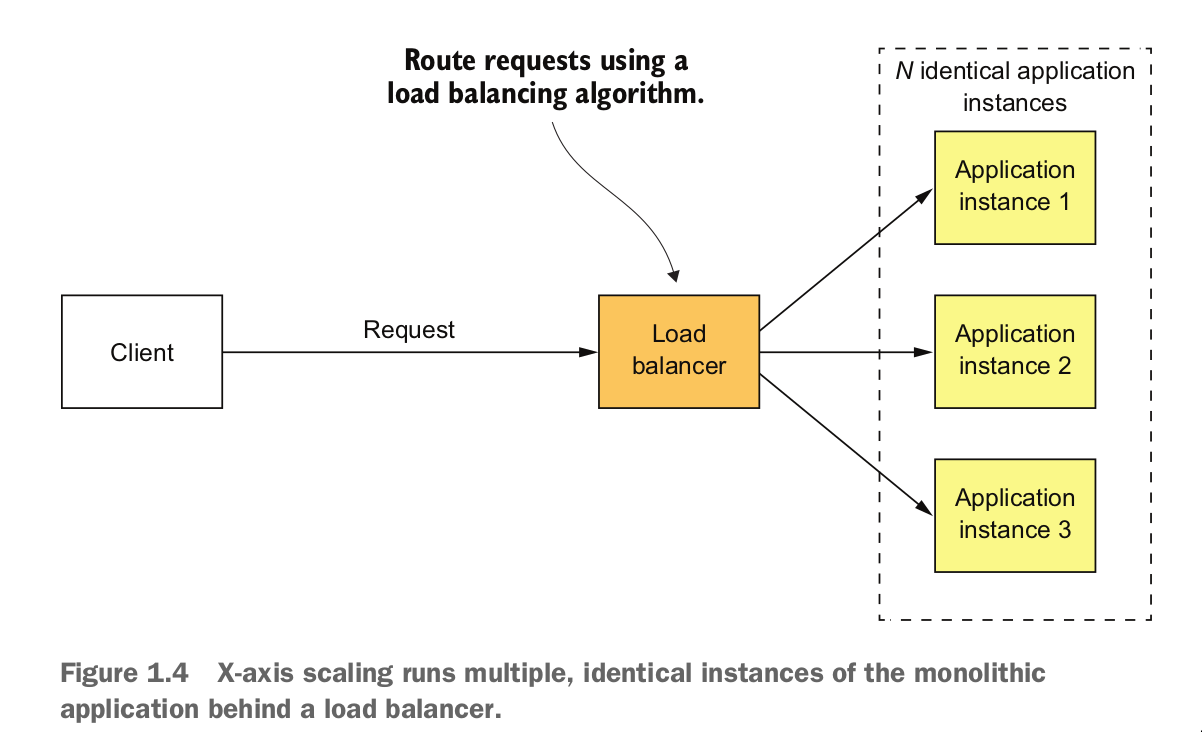
Z-axis scale
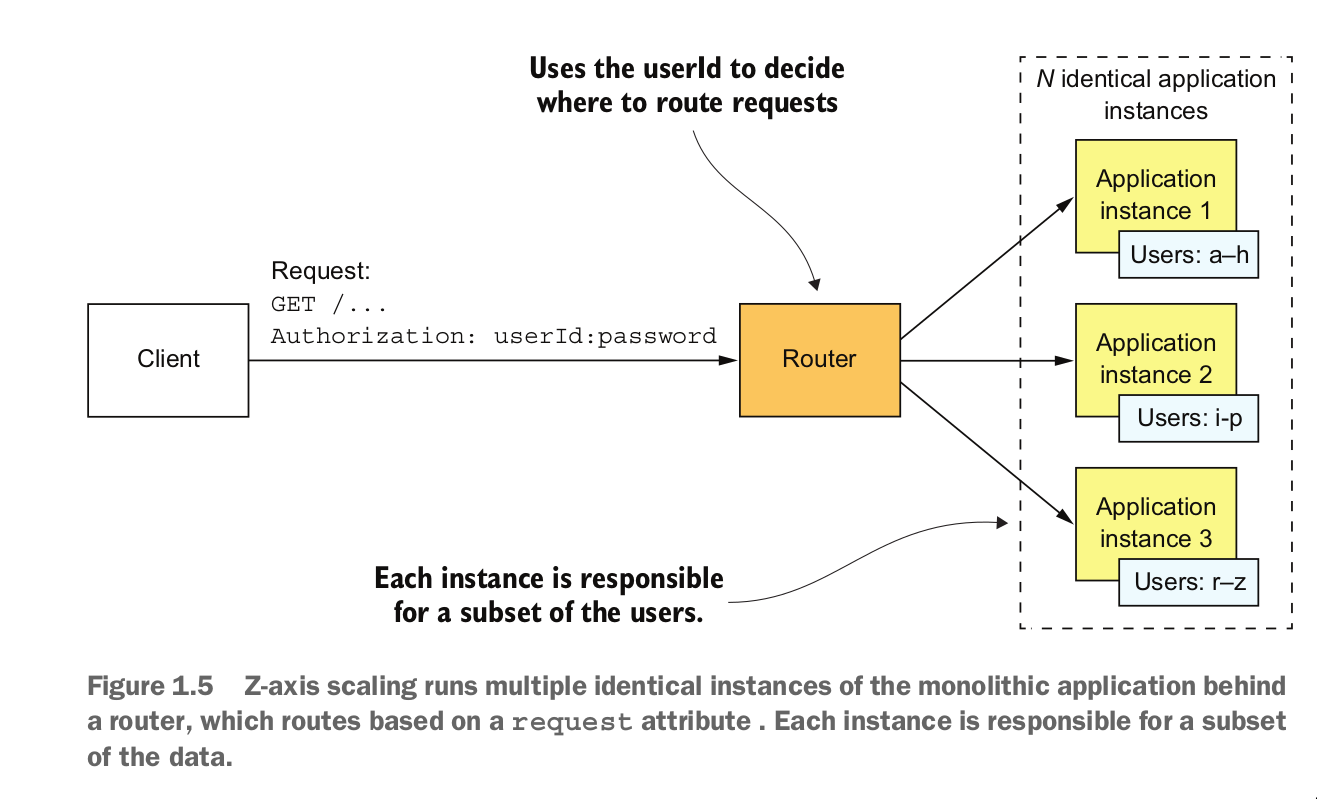
Y-axis scale
Scaling functionally by decomposing an application into services
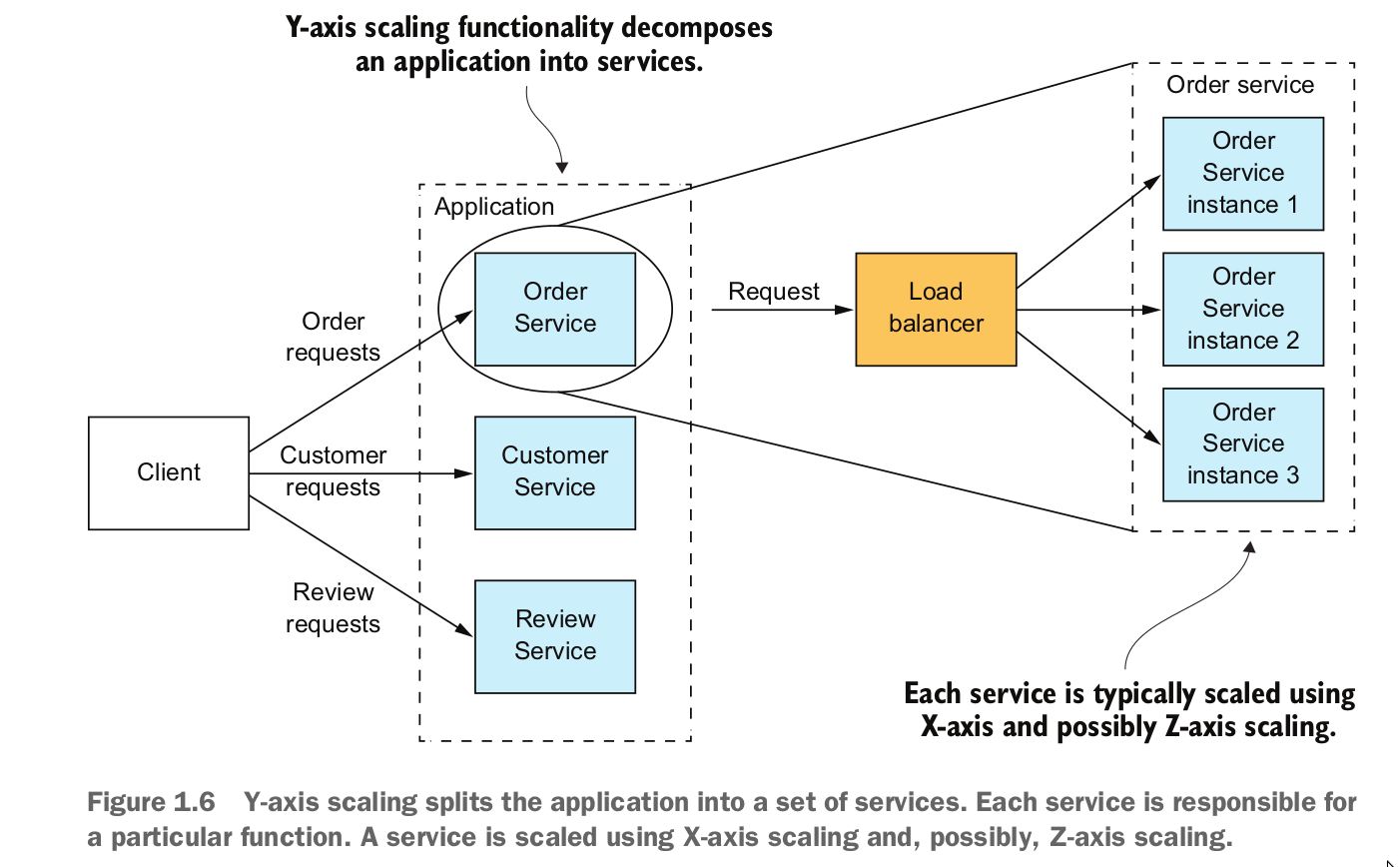
Each service has its own database
- They are loosely coupled and communicate only via APIs.
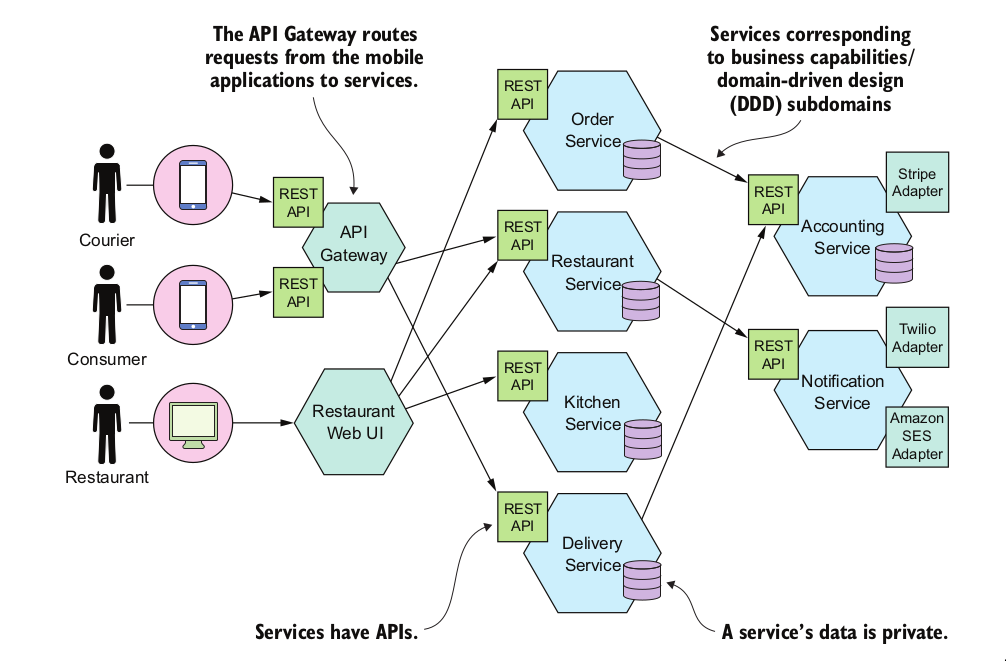
Benefits
- It enables the continuous delivery and deployment of large, complex applications:
- Reduces the time to market, which enables the business to rapidly react to feedback from customers.
- Employee satisfaction is higher because more time is spent delivering valuable features instead of fighting fires.
- Services are small and easily maintained.
- Services are independently deployable and scalable
- The microservice architecture enables teams to be autonomous.
- It allows easy experimenting and adoption of new technologies.
- It has better fault isolation
Drawbacks
- Finding the right set of services is challenging.
- Distributed systems are complex, which makes development, testing, and deploy- ment difficult.
- Deploying features that span multiple services requires careful coordination
